hankyoreh
Links to other country sites 다른 나라 사이트 링크
[Reportage] Gumi becomes a city that idolizes Park Chung-hee
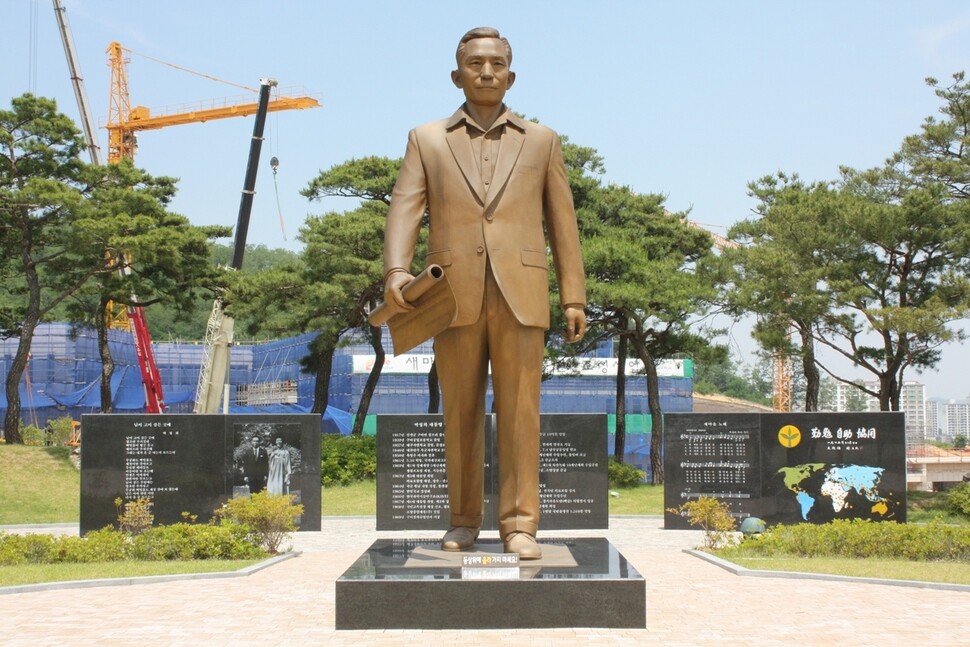
The new address of the place where former South Korean president Park Chung-hee (1917-1979) was born is 107 Park Chung-hee Street, Gumi, North Gyeongsang Province. When South Korea revamped its address system recently, the city of Gumi gave the name “Park Chung-hee Street” to the area where Park was born. The old address had been “171 Sangmo Neighborhood, Gumi, North Gyeongsang Province.” Visit the new address, and you will find the house where Park was born.

When I reached the intersection that leads to Park’s house on the afternoon of May 19, I found a monument to the Saemaeul Movement (Saemaeul means “new village”), on which was written the slogan “To Saemaeul! To the world! To the future!” The monument depicted four men in Saemaeul hats who were holding shovels and pushing a wagon as they moved forward purposefully.
Around the monument, there were several noticeboards that outlined Park’s biography and listed his main achievements (he was president from 1961 until his death by assassination in 1979). There was one sign that said in big letters, “President Park Chung-hee: founder of the Saemaeul Movement and the author of South Korea’s modernization.”
Following the road to the right of the monument for about 1.5 km, I came to a bronze statue of Park that was 5 meters tall. The statue had been built in Nov. 2011 using 600 million won (US$503,910) in contributions.
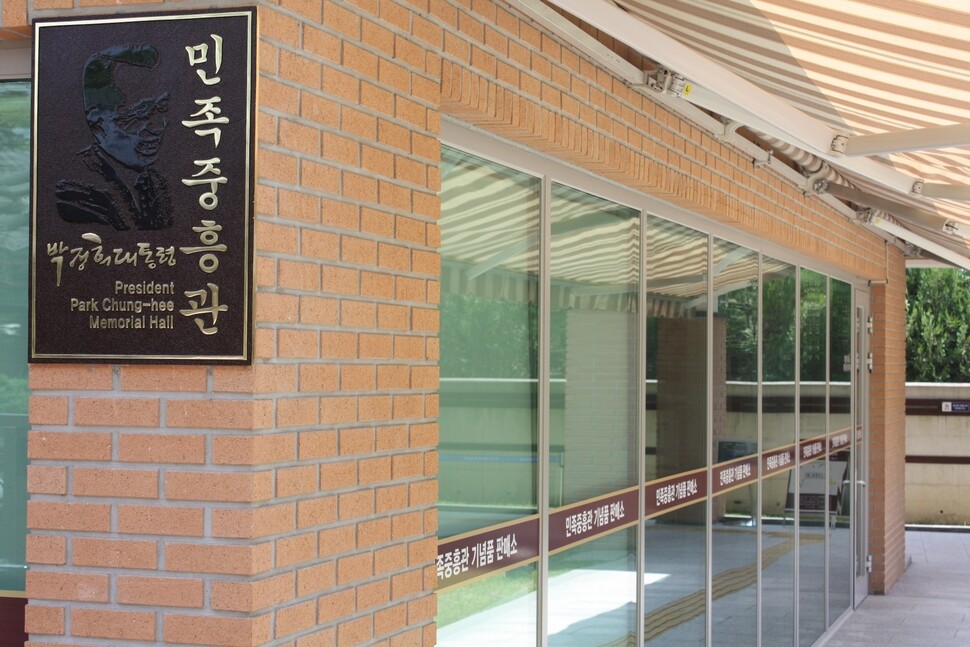
Behind the statue, there was a marble wall that displayed a poem written by Park, a picture of him with his wife Yuk Young-soo and the lyrics of the Saemaeul song. A recording of the same song was playing on a loop from speakers located near the marble wall. Behind that, a construction crew was hard at work on the Saemaeul Movement Theme Park.
Near the statue, I met an individual surnamed Park (75, no relation to Park Chung-hee) and asked him what he thought of the former president.
“It’s thanks to him that we escaped from poverty and are able to put food on the table,” Park said. “They say that young folks like you don’t like Park Chung-hee anymore. Going hungry for a while would straighten you out.”
Returning to the monument to the Saemaeul Movement, I went along the road to the left until I reached the President Park Chung-hee National Restoration Hall. The exhibits at the hall display objects that were once used by President Park, and a souvenir shop there sells Saemaeul hats along with dishes and frames containing pictures of President Park and his wife.
Going a little further beyond the President Park Chung-hee National Restoration Hall, I reached the house where Park was born. Park lived there from his birth in 1917 until he graduated from the Daegu Education College in 1937.

The house had been in disrepair until it was restored to its current condition in 1964, three years after the May 16 Coup in which Park came to power. Next to the house is a memorial hall for Park and his wife. On the visitor’s log in front of the memorial hall someone had written, “Please save the Gumi economy.”
While Park has been dead for 37 years, he is currently causing quite a commotion in Gumi. The commotion was caused by news that the municipal government has been promoting the production of a 2.8 billion won (US$2.35 million) musical about President Park under the tentative title “The Lonely Decision.”
Each Wednesday, the Gumi branch of People’s Solidarity for Participatory Democracy (PSPD) and other civic groups have been holding single-person demonstrations in front of the entrance to Gumi City Hall in opposition to the musical.
“Spending tax revenue on a project to commemorate Park Chung-hee represents excessive hero worship that has no economic benefits,” said PSPD’s Gumi branch, which is calling for the musical to be shut down.
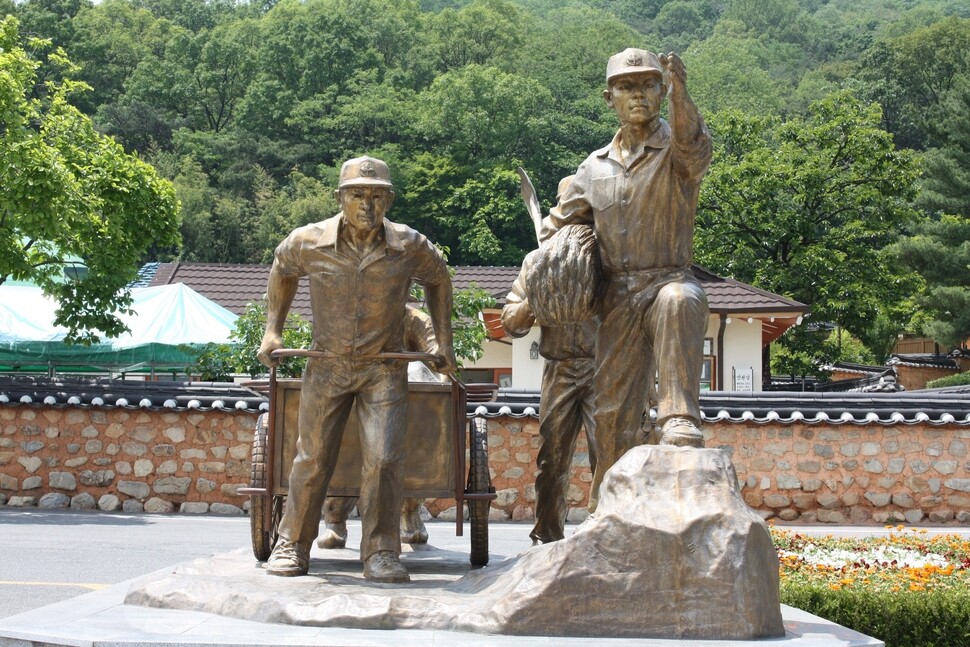
In fact, Gumi has lavished money on commemorative projects for the former president. Even though Park’s childhood home had been restored and the statue and memorial hall had already been built, Gumi spent 5.85 billion won in Mar. 2012 to build the President Park Chung-hee National Restoration Hall.
Since Feb. 2006, the city has spent 28.6 billion won on building a park (77,000 square meters in area) around Park’s childhood home. In Oct. 2013, it began construction on the Saemaeul Movement Theme Park (25,000 square meters in area), which has cost 87 billion won.
In June 2014, Gumi also spent 54 million won researching the kind of meals that Park Chung-hee ate and providing them to the public. The city is also planning to build a park near Park’s childhood home containing related historical documents, a project that will cost 20 billion won.
In 2002, the city changed the name of the Gumi Indoor Gymnasium, located in Gwangpyeong Neighborhood, to the “Park Chung-hee Gymnasium.”
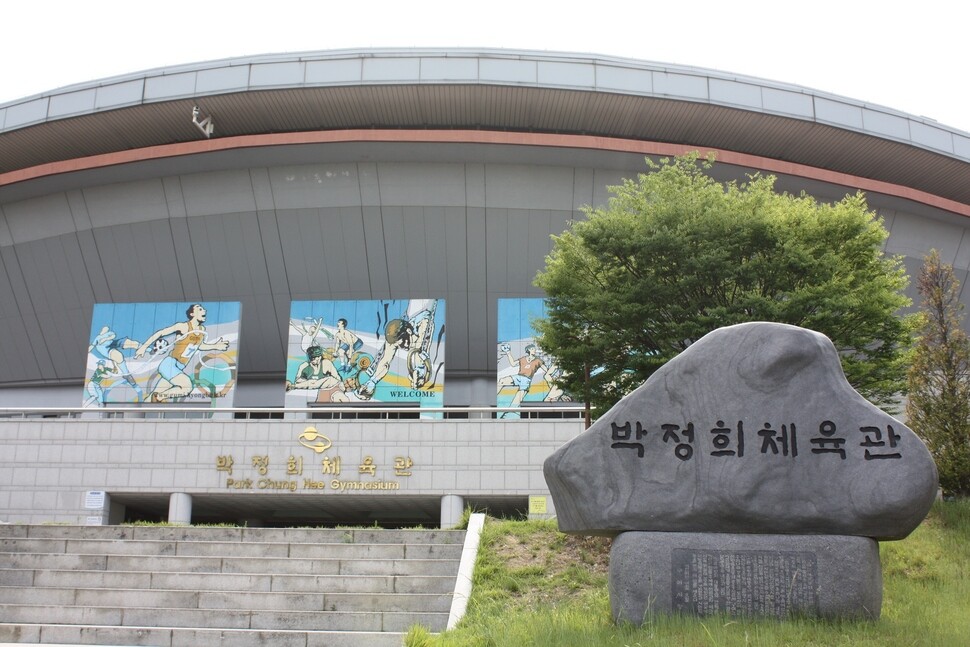
As time goes by, Gumi is also budgeting more money for events held each year on the anniversary of Park’s birth (Nov. 14) and death (Oct. 26). In 2012, the event marking Park’s death had a budget of 6.86 million won, but in 2013, when Park’s daughter Park Geun-hye was became president, the budget more than doubled to 14.7 million won. The budget for the event commemorating Park Chung-hee’s birth also increased over the same period, from 73.5 million won in 2012 to 77.42 million won in 2013.
From 2009 to 2015, the city spent a total of 533.38 million won on these two events. Next year, it is planning to celebrate the 100th anniversary of Park’s birth in a big way – the anniversary celebration has a budget of 4 billion won.
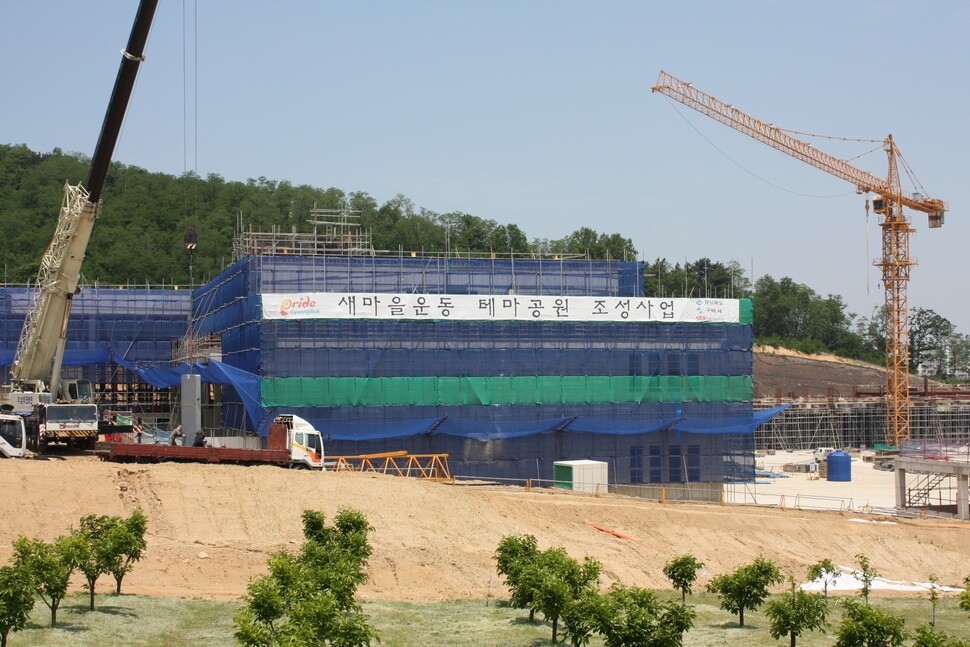
“This one-sided glorification and idolization of Park Chung-hee is very troubling,” PSPD’s Gumi branch said in a recent statement. “In addition, the huge scale of these projects will cause financial strain. It’s unclear what kind of economic advantage or benefit can be gained from these projects.”
Gumi used to be a country village located in Seonsan County, but on Jan. 1, 1962, the village was upgraded to a township.
The development of this tiny village into South Korea’s largest inland industrial zone took place while Park was president, between 1963 and 1979. Construction began on Gumi National Industrial Complex No. 1 in 1969, which was followed by two more industrial complexes in 1977. The Goa, Haepyeong, and Sandong agro-industrial complexes were built under President Roh Tae-woo (1988-1993) and a fourth industrial complex under President Kim Dae-jung (1998-2003).
Gumi’s industrial complexes and agro-industrial complexes occupy a total of 25.97 million square meters of land. As of Dec. 2015, 111,689 people were working for 3,206 companies in the complexes.
The value of exports from Gumi exceeded US$30 billion for the first time in 2005. Today, Gumi accounts for more than 60% of the total export volume of the 23 cities and counties in North Gyeongsang Province.
On Feb. 15, 1978, Gumi was upgraded once more, from a township to a city, which is why elderly people who have witnessed the process of economic development in Gumi feel strongly that Park built the city they see today.
During a speech at an event marking the anniversary of Park’s birth on Nov. 14, 2013, Gumi Mayor Nam Yoo-jin called Park “half god and half man.” And Park Seung-ho, former mayor of Pohang who ran for governor of North Gyeongsang Province during the regional elections in 2014, even proposed that the city of Gumi be renamed “Park Chung-hee City.”
Last year, 519,211 people visited Park’s childhood home.
“Memorial events are also held at the birthplaces of Roh Moo-hyun and Kim Dae-jung, and the city of Gumi holds a variety of memorial events for Park Chung-hee for the same moral reasons. Rather than looking at this ideologically, I wish people would see this as a unique aspect of Gumi, which is the city where Park was born and the city that he helped develop,” Nam said.
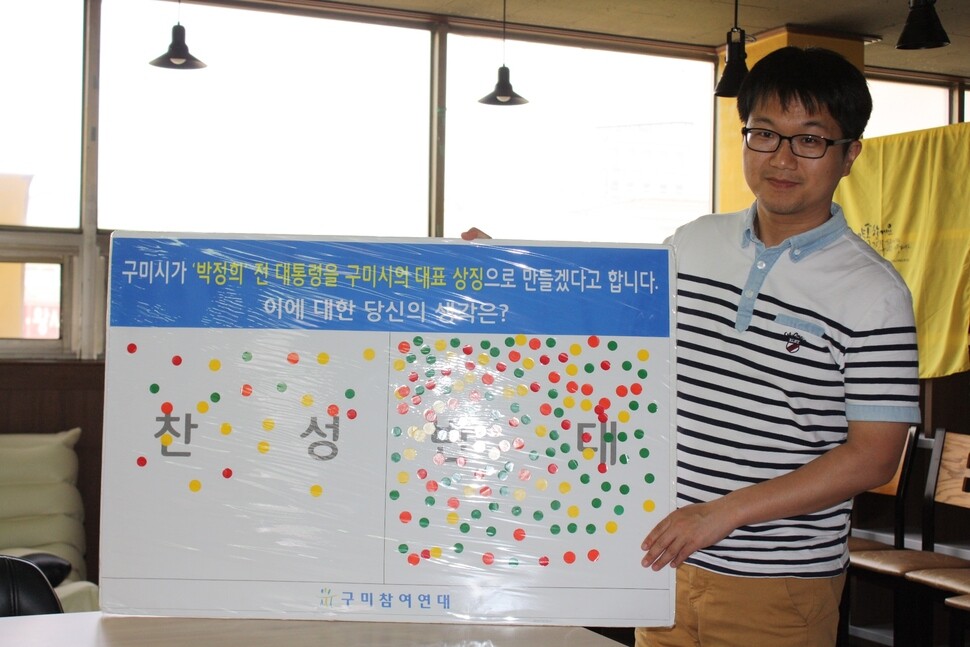
But even Gumi has been unable to avoid the current economic downturn. After peaking at US$34.9 billion in 2007, the city’s exports fell to US$28.9 billion in 2009. Exports starting rising again in 2010 and reached US$36.7 billion in 2013, but since then they have nosedived, falling to US$27.3 billion last year. At one time, Gumi had accounted for 10% of South Korea’s total exports, but now its share of exports has decreased to 5%.
Fortunately for Gumi, it has a large number of companies with fewer than 300 employees and a diversified range of industries, which has helped to blunt the economic crash.
“Gumi used to be in good shape, but its economic troubles are gradually getting worse with the downturn and as companies keep moving to the capital area. Rather than just relying on the central government, the city needs to spend less money on commemorative projects for Park Chung-hee and more money on expanding welfare for the people of Gumi,” said Choi In-hyeok, secretary-general of PSPD’s Gumi branch.

By Kim Il-woo, Daegu correspondent
Please direct questions or comments to [english@hani.co.kr

Editorial・opinion
![[Column] The state is back — but is it in business? [Column] The state is back — but is it in business?](https://flexible.img.hani.co.kr/flexible/normal/500/300/imgdb/original/2024/0506/8217149564092725.jpg) [Column] The state is back — but is it in business?
[Column] The state is back — but is it in business?![[Column] Life on our Trisolaris [Column] Life on our Trisolaris](https://flexible.img.hani.co.kr/flexible/normal/500/300/imgdb/original/2024/0505/4817148682278544.jpg) [Column] Life on our Trisolaris
[Column] Life on our Trisolaris- [Editorial] Penalties for airing allegations against Korea’s first lady endanger free press
- [Editorial] Yoon must halt procurement of SM-3 interceptor missiles
- [Guest essay] Maybe Korea’s rapid population decline is an opportunity, not a crisis
- [Column] Can Yoon steer diplomacy with Russia, China back on track?
- [Column] Season 2 of special prosecutor probe may be coming to Korea soon
- [Column] Park Geun-hye déjà vu in Yoon Suk-yeol
- [Editorial] New weight of N. Korea’s nuclear threats makes dialogue all the more urgent
- [Guest essay] The real reason Korea’s new right wants to dub Rhee a founding father
Most viewed articles
- 1[Column] Why Korea’s hard right is fated to lose
- 2Amid US-China clash, Korea must remember its failures in the 19th century, advises scholar
- 360% of young Koreans see no need to have kids after marriage
- 4[Column] Can Yoon steer diplomacy with Russia, China back on track?
- 5[Column] The state is back — but is it in business?
- 6[Editorial] Stagnant youth employment poses serious issues for Korea’s future
- 7Hybe-Ador dispute shines light on pervasive issues behind K-pop’s tidy facade
- 8Inside the law for a special counsel probe over a Korean Marine’s death
- 9Japan says it’s not pressuring Naver to sell Line, but Korean insiders say otherwise
- 10Presidential office warns of veto in response to opposition passing special counsel probe act